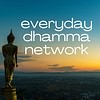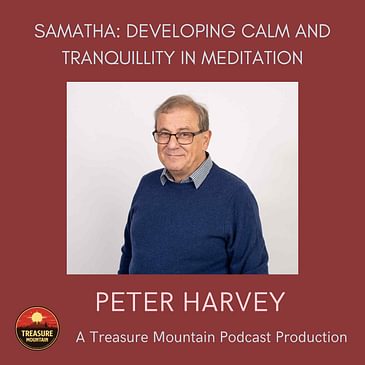In this episode of Treasure Mountain we will explore the purpose and nature of samatha meditation, and it’s relation to other forms of meditation - notably vipassana meditation - and to the Buddhist path as a whole.
And our guest to help us have a deeper appreciation of samatha meditation is Professor Peter Harvey. Professor Harvey did a philosophy degree at Manchester University. Whilst there, he became a Buddhist after attending talks at the Buddhist Society and learning mindfulness of breathing Buddhist meditation. This then inspired him to visit India and do a doctorate in Buddhist Studies at the University of Lancaster, under Ninian Smart. From 1976 to 2011, he was a lecturer in Religious Studies at the Polytechnic then University of Sunderland. He taught Indian religions, the study of religion and also some Philosophy, and ended up Professor of Buddhist Studies, running an online MA Buddhist Studies. On top of all that he has Buddhist meditation in the Samatha Trust tradition since 1977, in Durham and Sunderland, and since 2015 in York and online. Peter Harvey’s publications on Buddhism include 'An Introduction to Buddhism: Teachings, History and Practices' and 'An Introduction to Buddhist Ethics; Foundations, Values and Issues'. Whilst Peter retired from academia in 2011, he is still teaching meditation online through the Samatha Trust. He now spends his time writing and editing Buddhist material, teaching meditation to beginners and more experienced meditators, in recent years over Zoom, as well as gardening, and travelling around Yorkshire.
---
Links related to this episode:
- The Samatha Trust
- Books written by Peter Harvey:
Books related to the topic of samatha meditation:
- Paul Dennison, Jhāna Consciousness: Buddhist Meditation in the Age of Neuroscience. Shambhala, 2022: the jhānas, aspects of the Samatha Trust method, and brain scans of Samatha meditators- by a senior Samatha Trust teacher.
- L.S. Cousins, Meditations of the Pali Tradition: Illuminating Buddhist Doctrine, History and Practice, Shambhala, 2022: an excellent survey of the history of mainly Theravāda samatha and vipassanā practices over the millennia up to today, by a senior Samatha Trust teacher
- L. S. Cousins, 1984 paper, ‘Samatha-yāna and vipassanā-yāna’: https://www.academia.edu/1417366/Samatha_y%C4%81na_and_Vipassana_y%C4%81na ).
- Peter Harvey, An Introduction to Buddhism: Teachings, History and Practices, 2nd edition, Cambridge University Press, 2013. Chapter 11, pp.318–375, is on various forms of Buddhist meditation, including Samatha and Vipassanā, pp.318–44.
- Sarah Shaw, Introduction to Buddhist Meditation, Routledge, 2009: an overview of the range of methods in Buddhism, by a Samatha Trust teacher.
- Sarah Shaw, The Spirit of Buddhist Meditation, Yale University Press, 2014.Sarah Shaw, Mindfulness: Where it comes from and what it means, Shambhala, 2020.
Links related to Treasure Mountain Podcast:
- Treasure Mountain Podcast
- The Everyday Dhamma Network
- Support the podcast with a donation (via the Ko-fi creators platform)




